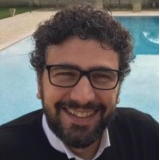Smart Wound Dressings
A special issue of Applied Sciences (ISSN 2076-3417). This special issue belongs to the section "Chemical and Molecular Sciences".
Deadline for manuscript submissions: closed (30 September 2019) | Viewed by 13937
Special Issue Editors
Interests: polymeric devices for biomedical applications, including scaffolds for regenerative medicine, micro- and nano-particles for controlled drug delivery, wound dressings, and perm-selective barriers for cell encapsulation
Special Issues, Collections and Topics in MDPI journals
Interests: biomaterials; scaffold; tissue engineering; material characterization; viscoelasticity; hydrogels; green chemistry; natural polymers
Special Issues, Collections and Topics in MDPI journals
Special Issue Information
Dear Colleagues,
Although wound healing mechanisms have been widely unraveled, proper and timely wound closure is yet challenging. While traditional wound dressings work well under physiological healing conditions, wound closure is still very hard to achieve in cases of impaired or dysfunctional healing, such as in chronic wounds (e.g., diabetic foot ulcers) and extensive full-thickness burns. Bacterial infections are common complications that worsen the damage; delay the healing process; and, if not properly managed, may induce life-threatening sepsis. Furthermore, even when wound closure is achieved, excessive scar formation and contracture may be obtained, which result in esthetic and functional impairment.
The aim of this Special Issue is to highlight some of the most recent scientific and technological advances in the development of smart or active wound dressings. Since the wound environment is highly dynamic, smart dressings are required to monitor the healing process and respond to it in a prompt and appropriate manner (e.g., by delivering antibiotics, drugs, or other bioactive molecules). These active devices should be able to orchestrate the biological processes needed for healing while fighting potential infections and reducing scar formation and contracture. Moreover, ideal wound management demands dressings that perfectly fit the wound site and allow for non-traumatic and fast dressing changes.
Topics of interest for this Special Issue deal with the development of flexible and responsive materials, (bio)sensors, and/or integrated devices suitable for the creation of advanced wound dressings. In order to provide guidance to clinical translation, the regulatory requirements regarding quality and safety of the devices are also of interest.
Dr. Marta MadaghieleDr. Christian Demitri
Guest Editors
Manuscript Submission Information
Manuscripts should be submitted online at www.mdpi.com by registering and logging in to this website. Once you are registered, click here to go to the submission form. Manuscripts can be submitted until the deadline. All submissions that pass pre-check are peer-reviewed. Accepted papers will be published continuously in the journal (as soon as accepted) and will be listed together on the special issue website. Research articles, review articles as well as short communications are invited. For planned papers, a title and short abstract (about 100 words) can be sent to the Editorial Office for announcement on this website.
Submitted manuscripts should not have been published previously, nor be under consideration for publication elsewhere (except conference proceedings papers). All manuscripts are thoroughly refereed through a single-blind peer-review process. A guide for authors and other relevant information for submission of manuscripts is available on the Instructions for Authors page. Applied Sciences is an international peer-reviewed open access semimonthly journal published by MDPI.
Please visit the Instructions for Authors page before submitting a manuscript. The Article Processing Charge (APC) for publication in this open access journal is 2400 CHF (Swiss Francs). Submitted papers should be well formatted and use good English. Authors may use MDPI's English editing service prior to publication or during author revisions.
Keywords
- Wound healing
- Wound management
- Chronic wounds
- Smart hydrogels
- Antibacterial
- Sensors
- Drug delivery
- Skin regeneration






